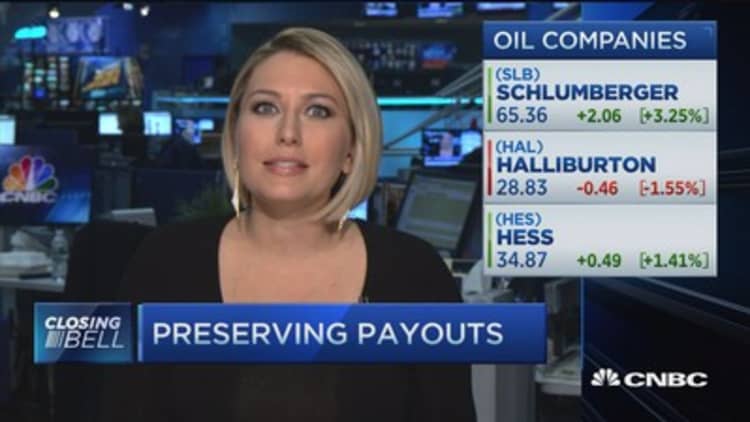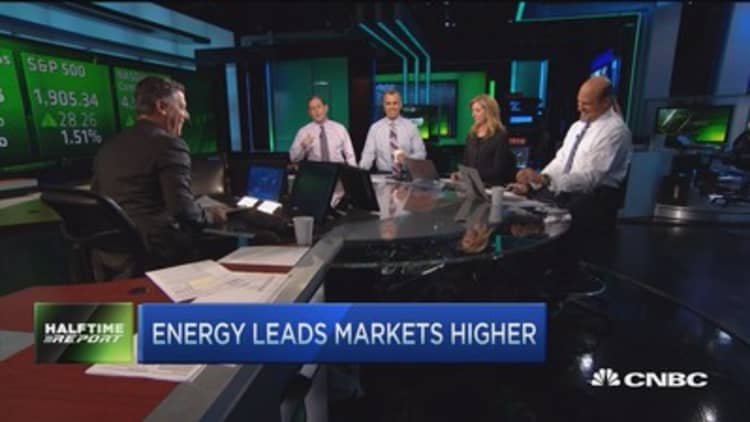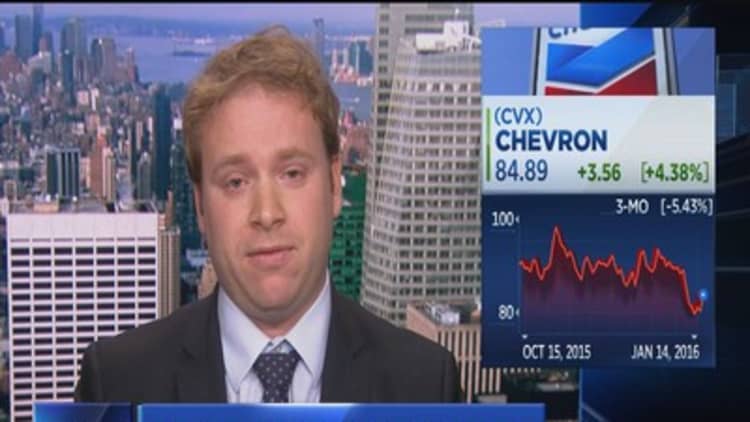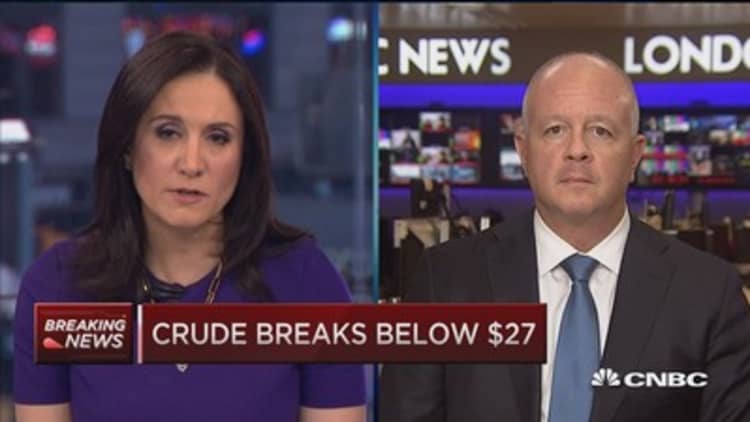


Earnings season gets underway for the energy industry's giants on Friday when Chevron reports before the bell. With profits and revenue for so-called "Big Oil" expected to fall significantly from a year ago, investors will have an eye on a few critical factors.
In a field of battered drilling stocks, many analysts have advocated holding the big, integrated oil companies that have both upstream exploration and production and downstream refining operations. But that doesn't mean investors have treated the shares kindly.
Six of the biggest oil companies — Chevron, ExxonMobil, Royal Dutch Shell, ConocoPhillips, BP and Total — collectively shed more than $200 billion in market capitalization last year, according to CNBC analysis of FactSet data.
Refining operations, which benefit from lower costs when crude falls, have eased the pain, but they can't entirely offset deep losses in drilling units.
Exxon's downstream earnings doubled to $2 billion in the third quarter, but its upstream exploration and production earnings fell by $5.1 billion to $1.4 billion.
Refiners have the wind at their backs right now, but they don't necessarily want their business to rely on low prices, Cowen & Co. analyst Sam Margolin said.
"It's not all that predictable or sustainable, really, for a long period of time. But certainly in the near term, it gets more people driving and increases demand when the price is low," he told "Squawk on the Street" this month.
The oil majors are doing much to reduce cut costs — including layoffs by the thousands — but what the segment truly needs is a rebound in oil prices, Margolin added.
With oil still trading in the low $30 per barrel range, investors will be focused on dividends, spending and production.
Defending the dividend

Dividend yield is the biggest concern for integrated energy companies now, said Jefferies analyst Jason Gammel.
"If we see $20-type oil moving into 2017, that's when we have to be concerned about most of the companies in the sector," he told CNBC's "Fast Money" last week.
To be sure, most analysts see U.S. crude ending 2016 in the high $30s to low $40s-per-barrel range.
Big Oil CEOs have pledged not to cut dividends, but with commodity prices falling to levels once thought improbable, some investors are concerned that a few majors won't have the balance sheet strength to sustain shareholder payouts.
Chevron halted its stock buyback program last year, and ExxonMobil substantially reduced buybacks. However, Exxon noted in its last earnings conference call that it was able to fund all investments and payouts through cash flow from operations, with only a marginal dip in its cash pile.
Gammel said he believes Chevron can maintain its dividend for up to two years with prices at current levels, and Shell can get through 2016.
Argus Research President John Eade told CNBC's "Power Lunch" this month that ConocoPhillips is also capable of preserving its dividend.
"These companies have low debt levels. They have access to credit. We think oil prices are going to be bottoming here around $30. They should be able to cover their payouts," he told CNBC's "Power Lunch."
Cutting spending, not production
Big oil continues to slash spending, but most spending cuts are expected to come from smaller players, such as U.S. shale oil drillers.
Investors already know how much Chevron expects to spend. The company last month announced a $26.6 billion capital budget for 2016, down 24 percent from last year. What's not yet clear is how much crude oil and gas that will yield.
Chevron previously said it expects production growth of 13 to 15 percent — about 2.9 million to 3 million barrels per day — by the end of 2017. The company is expected to give guidance for 2016 on Friday.
ConocoPhillips said in December it will spend $7.7 billion on capital expenditures in 2016, down 25 percent from 2015 and a whopping 55 percent from 2014. Still, the company sees production increasing by 1 percent to 3 percent next year.
ExxonMobil has not yet released its 2016 budget. The company said last quarter it had thus far cut $8 billion in capital and cash operating costs in 2015, on top of a previously announced plan to reduce capital expenditures by $4.5 billion.
Keeping up with the drillers
Big oil companies have another ace up their sleeves: big, long-term projects that regularly come online.
But CastleArk President and CIO Jerry Castellini told CNBC not all of these endeavors will provide a windfall.
"Big companies are trying to move toward their higher-cost, better break-even types of projects in the $40 to $70 [per barrel] range, and the ones that will do that most successfully will be the ones that you want to own right now," he told "Squawk on the Street" this month.
ConocoPhillips, for example, has a broad portfolio in the Permian Basin in Texas and can redeploy to low-cost areas, he said.
ExxonMobil has also been scooping up assets in the Permian, but some no longer believe the company stands out among the majors.
On Tuesday, investment bank Tudor, Pickering, Holt & Co. downgraded Exxon to "sell" from "hold," saying it sees "no reason for Exxon to continue to trade at a significant premium to its integrated peers with better risk-adjusted dividend yields available elsewhere."
Tudor questioned where Exxon's medium- and long-term growth would come from and said its projects for which a final investment decision has not yet been reached are challenged in its view. Because Tudor expects Exxon's 2016 spending on exploration and production to be lower than its peers, it has less room to cut.
To be sure, Tudor's reduced price target of $55 on shares of Exxon is well below the average target of $80.70 among analysts, according to FactSet.
—CNBC's Christopher Hayes contributed reporting to this story.




